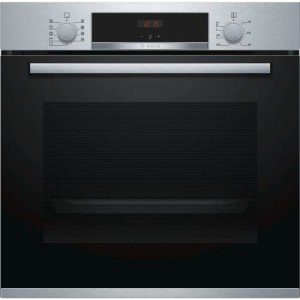The Rise of Built-In Ovens: A Seamless Approach to Modern Cooking
In modern cooking areas, where style aesthetic appeals blend effortlessly with performance, one home appliance sticks out as a true video game changer: the built-in oven. As property owners and chefs alike continue to seek ingenious options that boost their cooking experience, built-in ovens have ended up being significantly popular. This article checks out the advantages, considerations, and trends surrounding built-in ovens, highlighting why they are a vital feature in modern-day cooking spaces.
What is a Built-In Oven?
A built-in oven is a kitchen area appliance designed to be integrated into the cabinets of a cooking area instead of standing alone. Unlike best integrated ovens freestanding ovens, which can be moved and placed anywhere, built-in ovens come in various styles and sizes to fit specifically within designated areas. Readily available in single or double configurations, these ovens offer a structured appearance that matches modern-day kitchen area designs.
Benefits of Built-In Ovens
1. Space-Saving Design
Among the most appealing benefits of built-in ovens is their space-saving style. By integrating the oven into cabinets, you can maximize valuable counter and floor space. This is especially helpful in smaller kitchens, where making the most of space is necessary. Built-in ovens can be installed at eye level, making them more available and minimizing the requirement to bend down.
2. Visual Appeal
Built-in ovens contribute to a smooth and cohesive kitchen area style. Readily available in numerous finishes-- such as stainless steel, black, white, and custom cabinets-- they can blend seamlessly into the overall decoration. This aesthetic appeal enhances the kitchen's visual harmony and elevates the space, producing a modern-day and sophisticated atmosphere.
3. Boosted Functionality
Many built-in ovens come equipped with advanced cooking innovations, such as convection cooking, steam ovens, and smart functions. These improvements enable for flexible cooking options, making it much easier to achieve professional-level outcomes at home. Smart built-in ovens can even connect to Wi-Fi, making it possible for users to control the oven remotely, receive notices, and access a variety of cooking programs and dishes.
4. Improved Ventilation
Due to the fact that built-in ovens can be integrated with cooking area hoods and ventilation systems, they can help keep better air quality and lower cooking smells. This is especially substantial for those who enjoy to prepare with aromatic spices and components, as a reliable ventilation system can keep the kitchen area comfy and inviting.
5. Modification Options
Built-in ovens provide a broad range of customization options to match individual cooking styles and needs. From professional-grade home appliances with several cooking modes to compact styles for smaller cooking areas, homeowners can pick the oven that fits their specific requirements. Many producers likewise use personalized front panels, enabling you to match the oven's look to your cabinetry for a really unified look.
Considerations When Choosing a Built-In Oven
While built-in ovens have lots of advantages, there are very important factors to consider to bear in mind before buying:
1. Cost
Built-in ovens generally feature a greater cost than their freestanding counterparts due to their design and installation requirements. It's essential to aspect in both the expense of the oven and any extra expenditures associated with cabinetry adjustments or setup.
2. Installation Requirements

Installing a built-in oven typically requires expert assistance, particularly if you need to modify existing kitchen cabinetry. Guarantee that you consider any expenses related to setup, including labor and possible cabinets modifications.
3. Size and Dimensions
Before buying a built-in oven, determine the designated area accurately to guarantee a correct fit. Built-in ovens come in different sizes and setups, so selecting one that aligns with your needs and cooking area style is crucial.
4. Way of life and Usage
Consider your cooking routines and needs when picking a built-in oven. If you frequently host big events, a double oven might be more beneficial. On the other hand, if you have a compact cooking area, a single-wall oven may be adequate.
Patterns in Built-In Ovens
The kitchen appliance market is continually developing, and built-in ovens are not exempt from emerging trends. Some existing patterns include:
Smart Technology Integration: With the increase of smart home technology, built-in ovens now frequently include connection alternatives. This allows users to monitor cooking progress and change settings by means of mobile apps.
Energy Efficiency: As sustainability ends up being a concern, many manufacturers are purchasing energy-efficient built-in ovens that lower energy consumption while maintaining efficiency.
Multi-functional Designs: Built-in ovens now provide features such as air frying, slow cooking, and steaming, providing flexibility that fulfills a wide variety of cooking approaches.
Conclusion
Built-in ovens undoubtedly represent a perfect blend of style, function, and convenience in today's cooking areas. As more homeowners decide for this contemporary service, the focus moves to developing a cooking space that is as aesthetically pleasing as it is practical. Whether you are building a new home or redesigning your kitchen, thinking about a built-in oven might raise your cooking experience and transform your kitchen area into an elegant and functional haven. With a variety of choices readily available and ongoing innovations in innovation, built-in ovens remain a standout choice for both novice cooks and culinary lovers alike.
